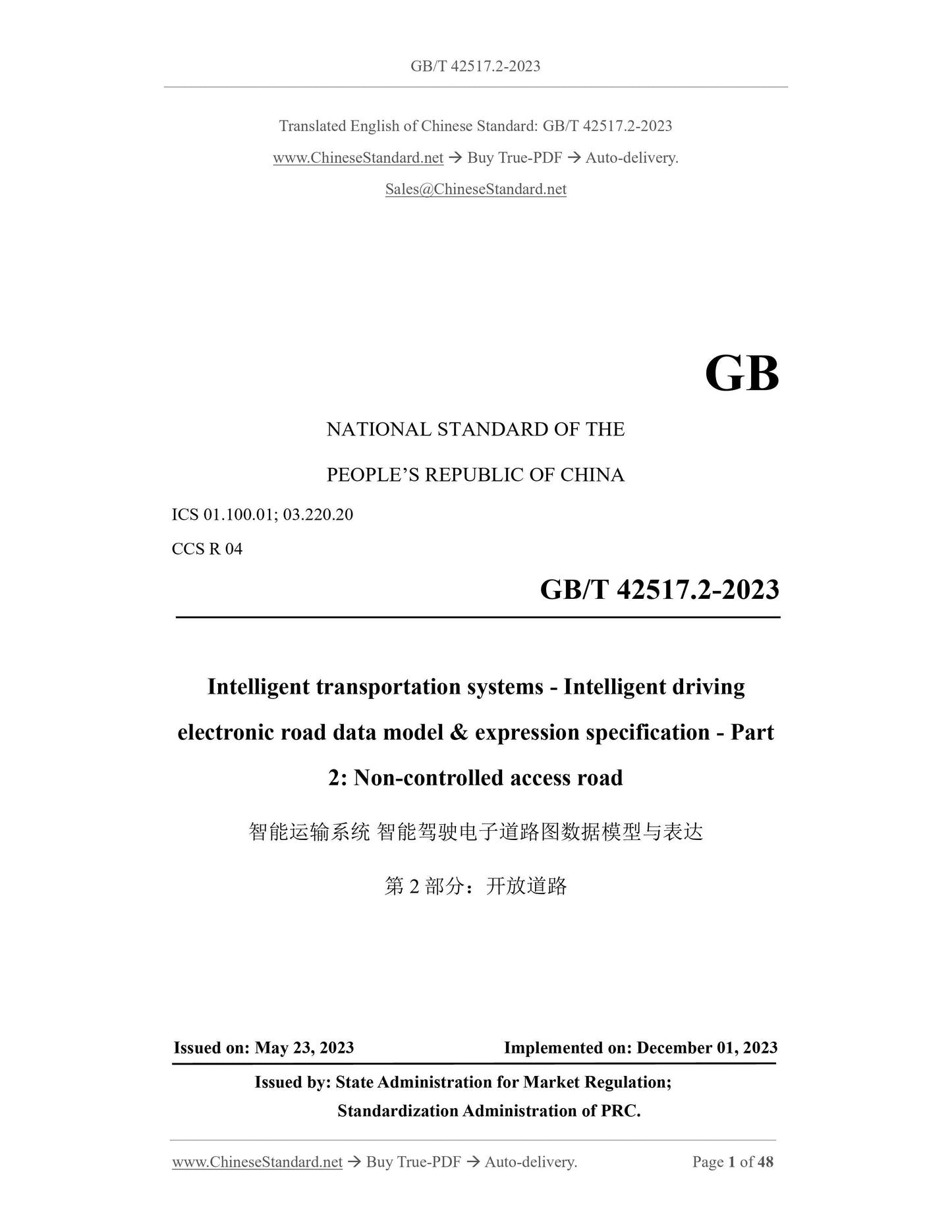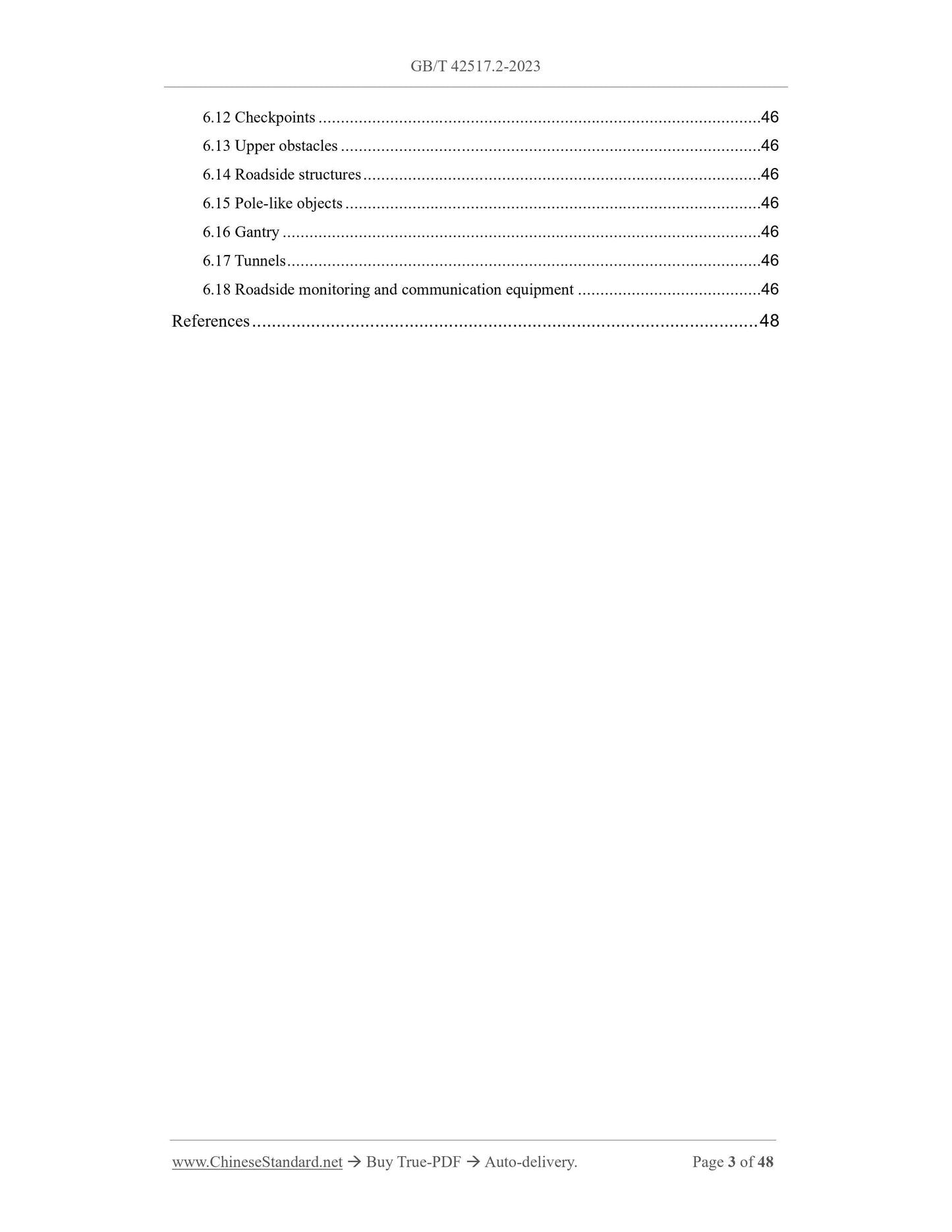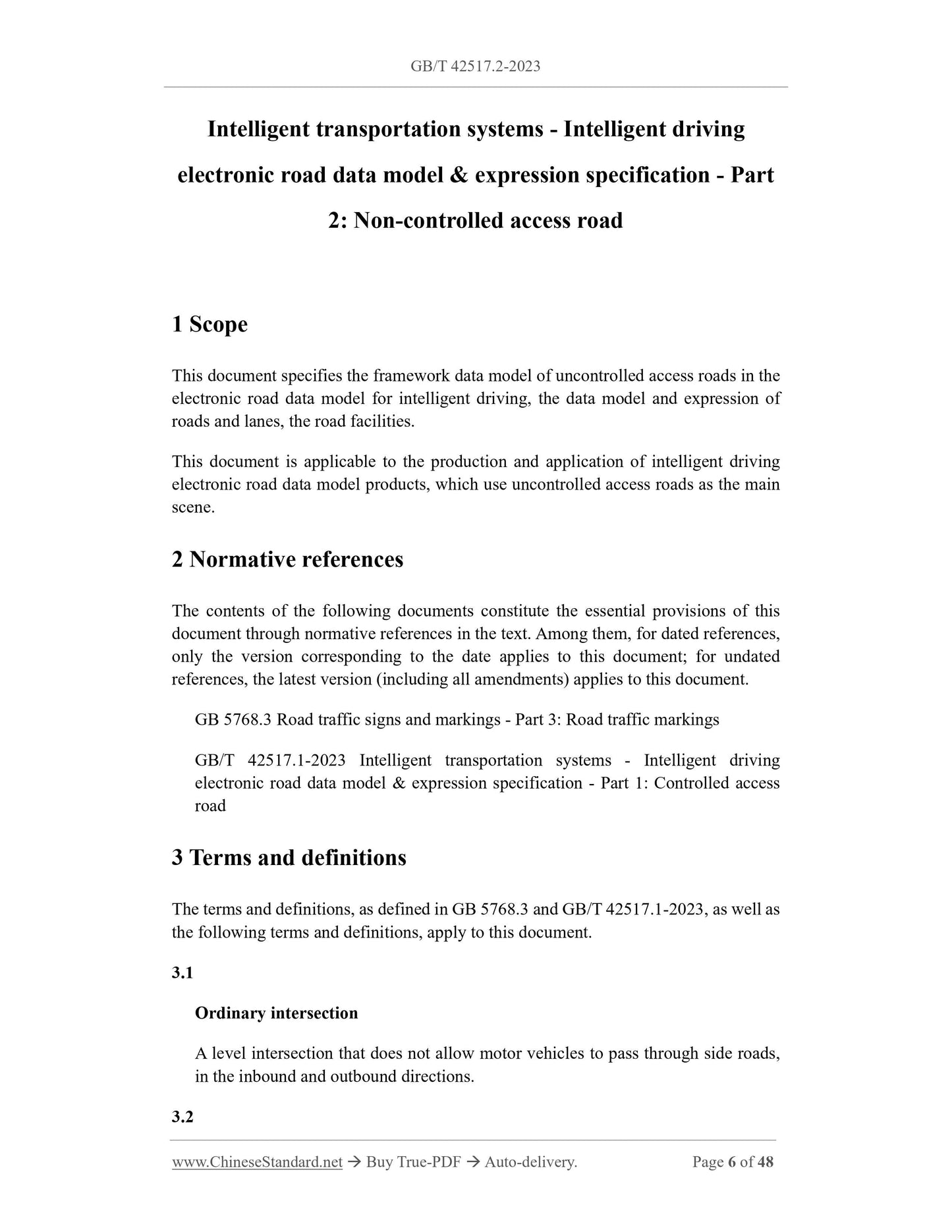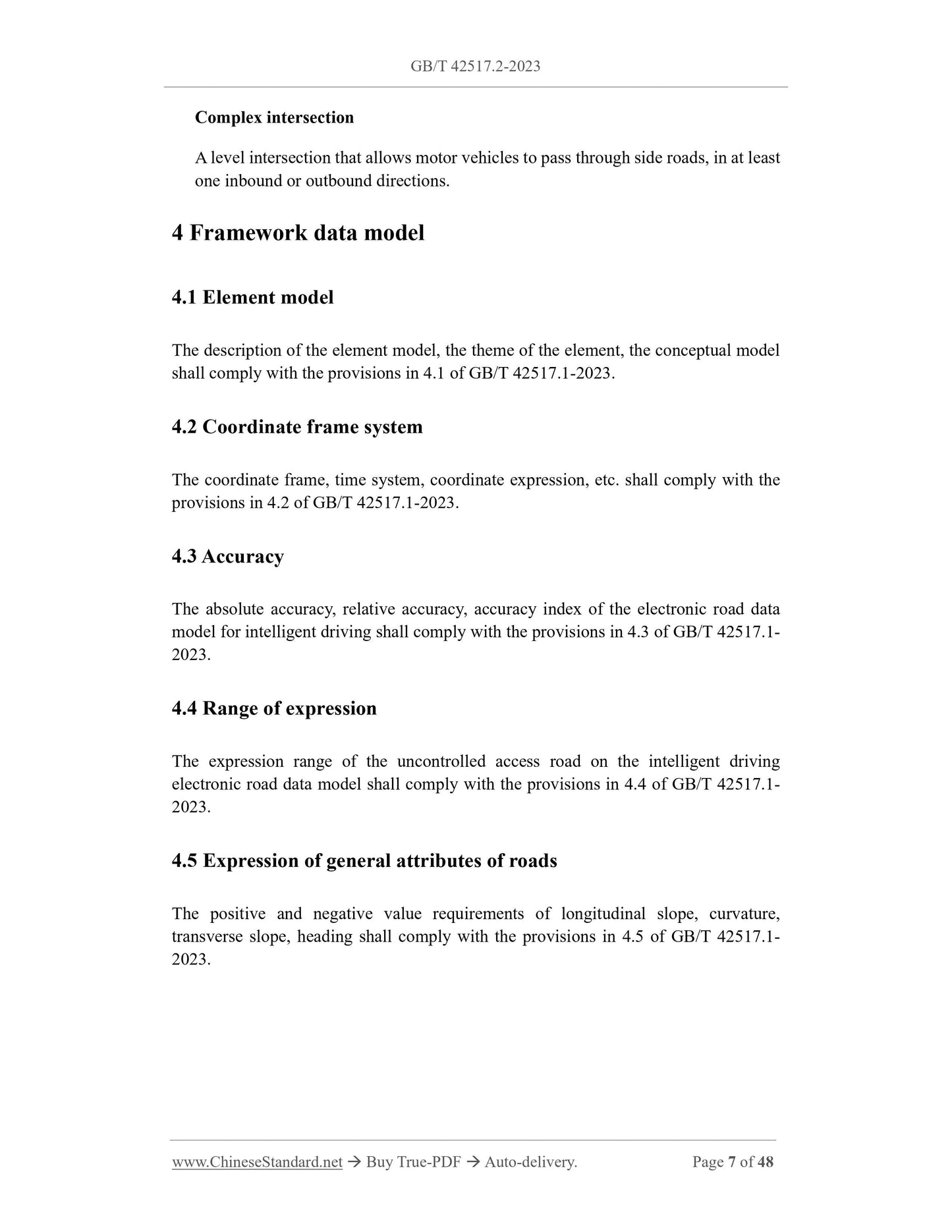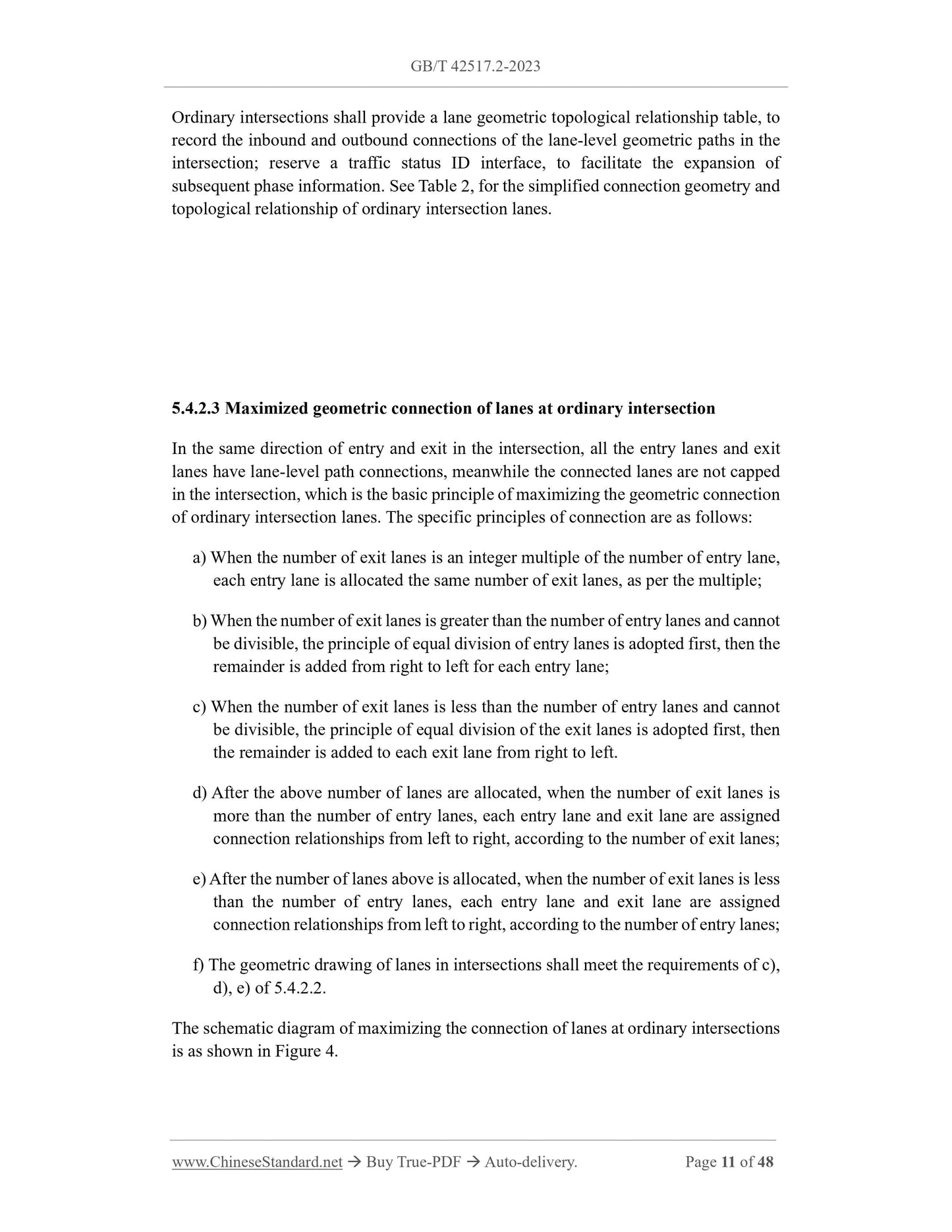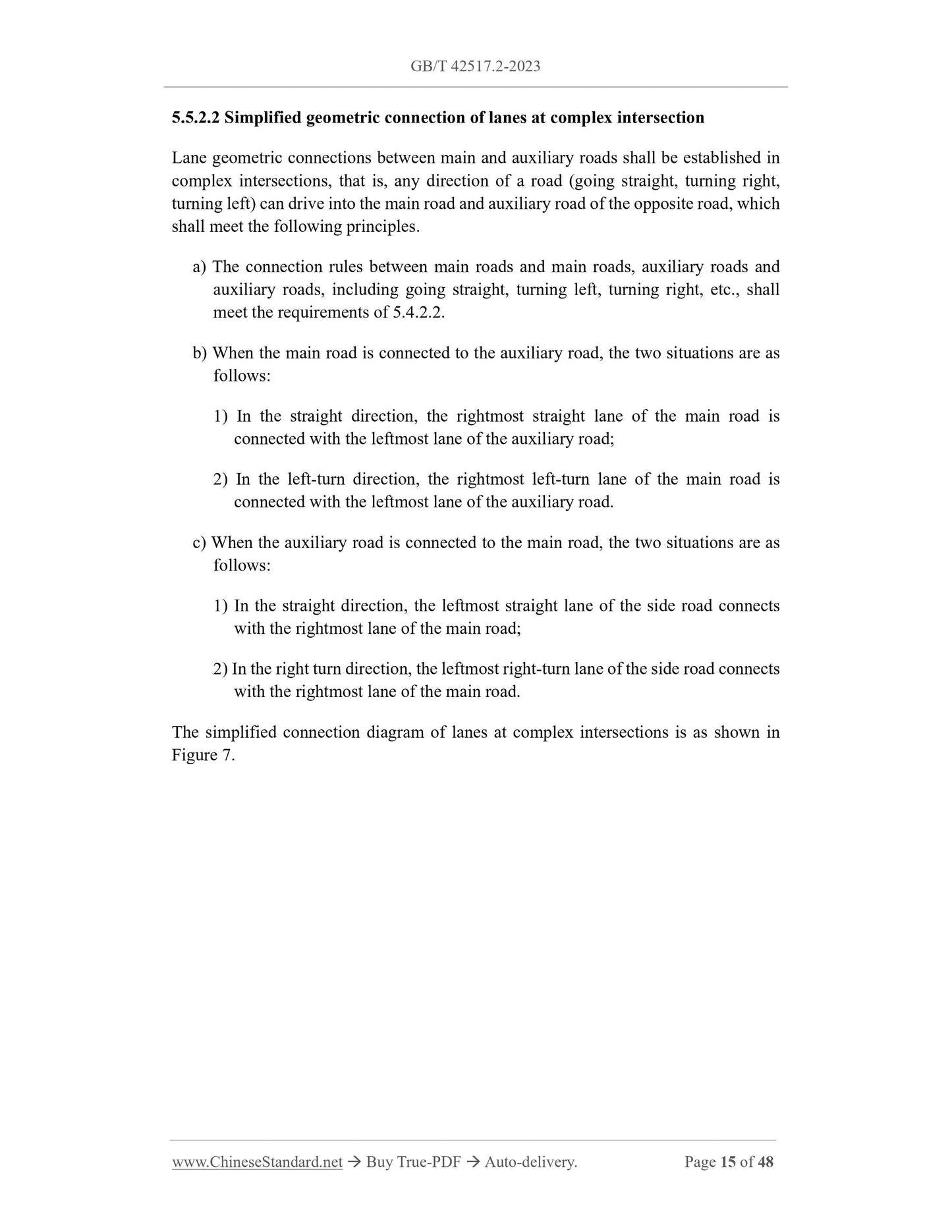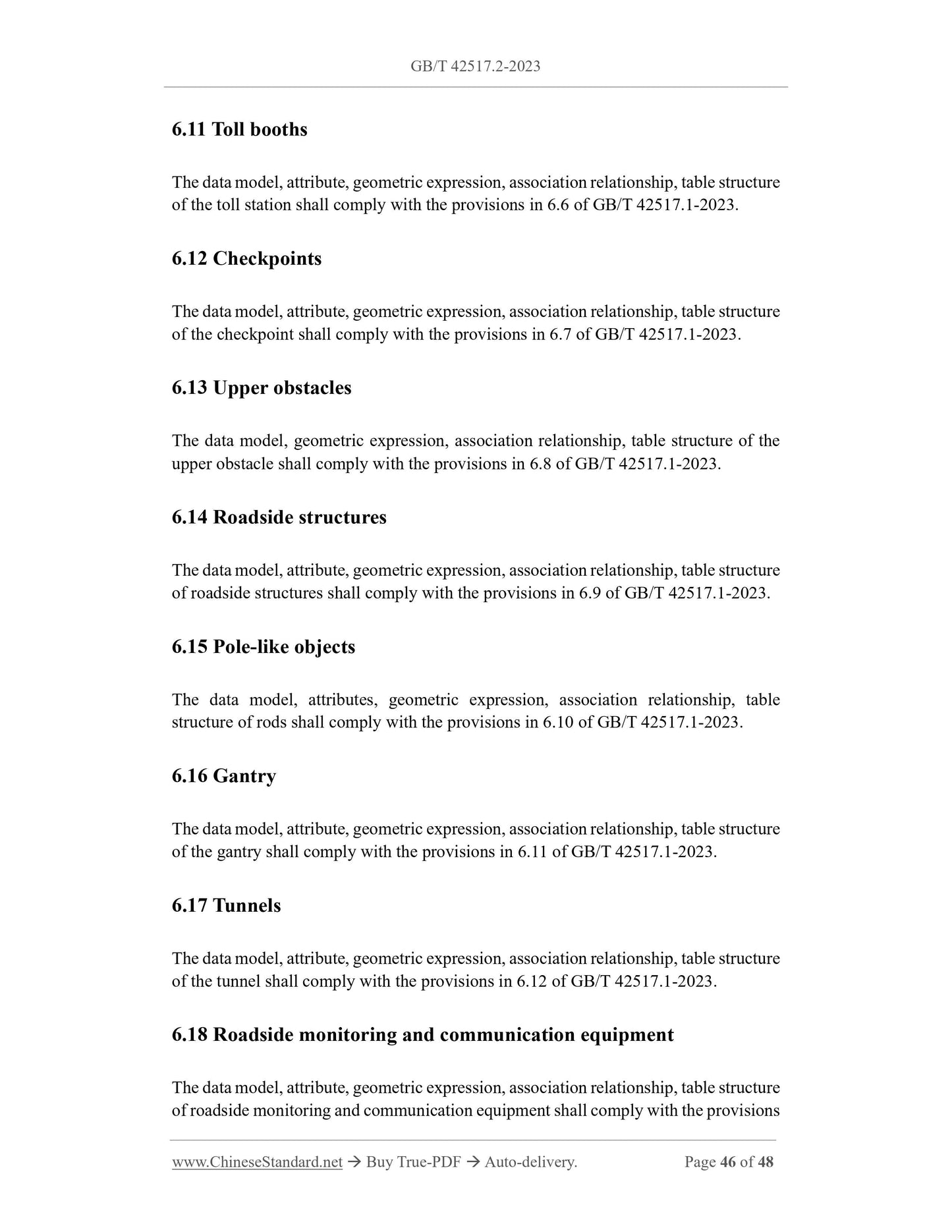1
/
of
10
www.ChineseStandard.us -- Field Test Asia Pte. Ltd.
GB/T 42517.2-2023 English PDF (GB/T42517.2-2023)
GB/T 42517.2-2023 English PDF (GB/T42517.2-2023)
Regular price
$755.00
Regular price
Sale price
$755.00
Unit price
/
per
Shipping calculated at checkout.
Couldn't load pickup availability
GB/T 42517.2-2023: Intelligent transportation systems - Intelligent driving electronic road data model and expression specification - Part 2: Non-controlled access road
Delivery: 9 seconds. Download (and Email) true-PDF + Invoice.Get Quotation: Click GB/T 42517.2-2023 (Self-service in 1-minute)
Newer / historical versions: GB/T 42517.2-2023
Preview True-PDF
Scope
This document specifies the framework data model of uncontrolled access roads in theelectronic road data model for intelligent driving, the data model and expression of
roads and lanes, the road facilities.
This document is applicable to the production and application of intelligent driving
electronic road data model products, which use uncontrolled access roads as the main
scene.
Basic Data
| Standard ID | GB/T 42517.2-2023 (GB/T42517.2-2023) |
| Description (Translated English) | Intelligent transportation systems - Intelligent driving electronic road data model and expression specification - Part 2: Non-controlled access road |
| Sector / Industry | National Standard (Recommended) |
| Classification of Chinese Standard | R04 |
| Classification of International Standard | 01.100.01; 03.220.20 |
| Word Count Estimation | 48,461 |
| Date of Issue | 2023-05-23 |
| Date of Implementation | 2023-12-01 |
| Issuing agency(ies) | State Administration for Market Regulation, China National Standardization Administration |
Share
